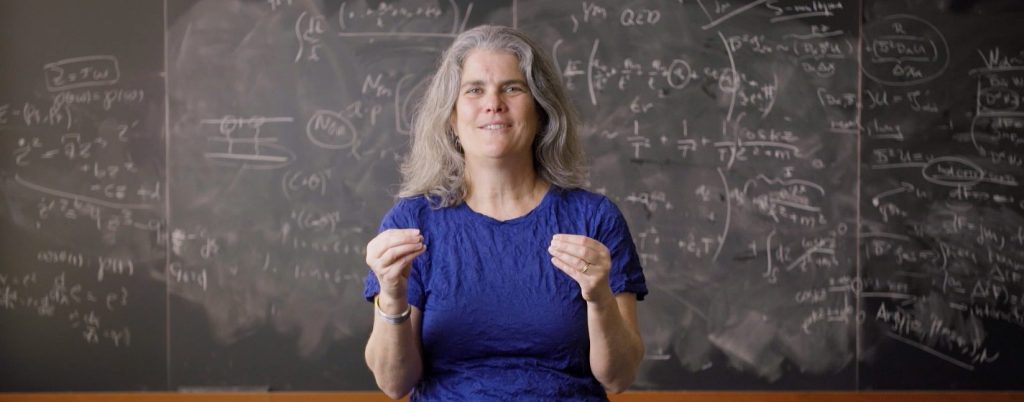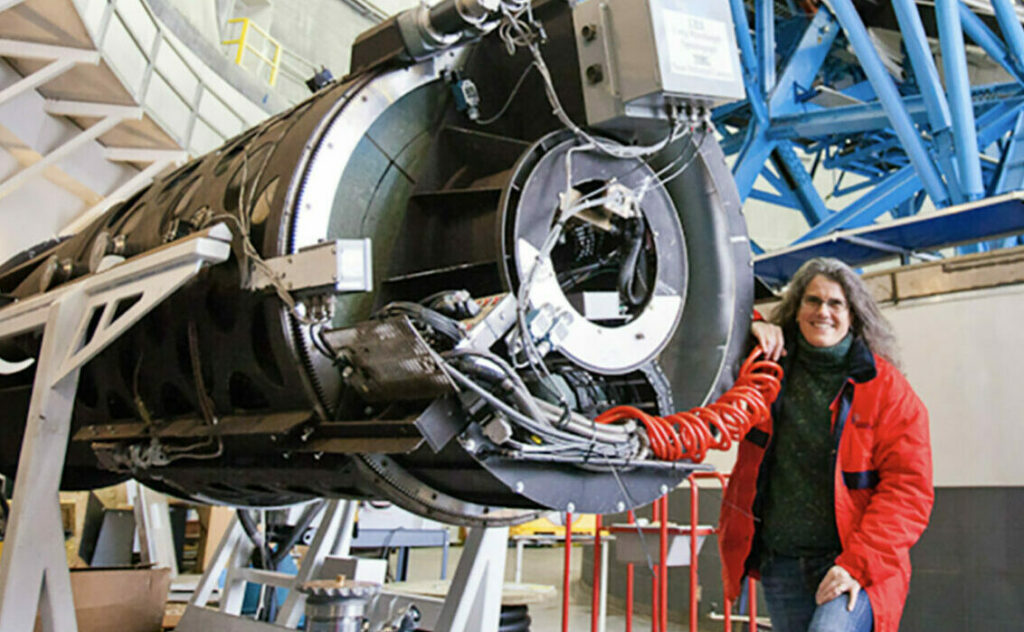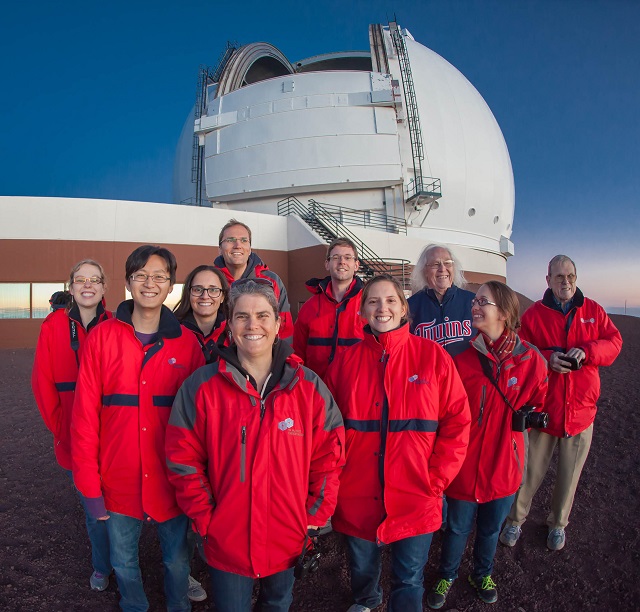Andrea Ghez on Discovering the Milky Way’s Supermassive Black Hole

All of us are all orbiting a supermassive black hole at the center of our galaxy, the Milky Way.
We know this because of Andrea Ghez. The University of California, Los Angeles astronomer pioneered telescope techniques to peer into our galaxy’s center, which she has now studied for over 25 years. Her team’s analysis of the stars in that region led to the discovery of a central black hole whose gravity pulls those stars in aberrant orbits. Ghez won the 2020 Nobel Prize in physics for this discovery.
But to Ghez, it’s always been about the journey. “The ‘aha’ moments don’t happen a lot,” she says. “You really have to enjoy the process.”
And she really does. Ghez revels in the careful cataloguing and re-analyzing of 25 years of observational data. She appreciates the often messy but constructive arguments she has with other scientists, even when the disputes play out publicly in journals and newspapers. Above all, she loves waking up in the morning with the gnaw of a puzzle she hasn’t solved yet. Ghez spoke to 1400 Degrees about her famous discovery and the role of science in society.
So, the elephant in the room: How has your life changed since you won the Nobel Prize?
I can’t keep up with my email. I mean, that was already a problem. But in the biggest picture, not much has changed. I was excited about research before, and I’m still excited about it.
I’m getting far more invitations to do interviews and talks, so I’m thinking carefully about what to accept. I’m figuring out the responsibility of having such a prize.

What do you see as a responsibility?
It’s really important to talk publicly about the role of science in society. We live in this moment where the credibility of science is being challenged. I like to talk about the importance of disagreement. We need to be able to talk to people who don’t agree with us. In science, disagreement leads us to deeper understanding; it’s an opportunity to learn.
What’s a constructive scientific disagreement you’ve had?
You know, I share the prize with my competitor [Professor Reinhard Genzel]. So I’ve had 25 years of experience with very high-profile competition, and we’ve had so many interesting arguments.
One argument involved an object called G2, near the galaxy center. In images, G2 was elongating as it came in towards the central black hole. His team proposed that this was a gas cloud. If so, the entire cloud would fall into to the black hole at closest approach and be gone. I was more convinced that this object was a star, which meant that it would survive closest approach. The community wrote tons of papers around this, which was just great fun. So the disagreement engaged a much bigger community than just the two of us.
Closest approach was in 2014, so there was a simple test for our predictions. Either the object was there, or it wasn’t. I like this story because I’m biased: the object survived. But it’s important to contain your enthusiasm about your own viewpoint, because sometimes nobody is right. That’s often the most fun.
What’s a night of observing like for you?
You learn what people like to eat in the middle of the night. My group knows I love to eat pistachio nuts. I’ve evolved to healthier snacks. It used to be Fig Newtons and pop tarts.

Technology has completely altered observing in the last 25 years. Remote observing has made it much more convenient, but I miss the spirit of being with collaborators in person. When I first started this project in 1995, observing meant going to the Keck telescope at the top of Mauna Kea in Hawai’i. It was such an adventure. You had to physiologically acclimatize, since it was at 10,000 feet. We stayed there with astronomers from all over the world in a facility that was like a college dorm. We’d have dinner together, and our day would begin.
Those days, you would get a whole night of observing, so if it wasn’t cloudy, I’d work from sunset to sunrise. Then in 1998, we could use the telescope remotely from the observatory headquarters in Waimea, so we didn’t go the top of the mountain anymore. Later, we could observe with Keck from UCLA, in smaller chunks of time. This year, it’s become possible to observe from home. It’s great we can observe during COVID, but it’s weird. It’s like observing by Zoom.
What were some important moments in your journey to confirm the black hole at the center of our galaxy?
People didn’t think we could make the Keck telescope work in the way we proposed. Our first proposal was actually turned down. So our first important moment was showing that we could make an image and see stars in 1996. Then, it was exciting to see the stars had moved, in the second image. By 1998, the images started to make the case for a massive object inside a small volume—a black hole. But people pushed back with alternative explanations, so we had to keep going.
In 2000, we reported stars accelerating. That was amazing—you could see three stars curving, with all their accelerations pointing at one location, where the black hole is. Then around 2003, we observed entire orbits of multiple stars, which really pushed the case for the black hole.
Why were the orbits so convincing?
Before then, I like to say we were like teenagers. We spoke very adamantly. We’d say, “The mass of the black hole is 2.6 million times the mass of the sun, plus or minus 0.2 million.” So very precise. But once we got the orbits, the mass of the black hole was coming in at 4 million. So we had this moment: “This is really different! Do we dare publish?” When we thought it through, we realized our early reports were based on all sorts of assumptions we hadn’t accounted for. The orbits got rid of a lot of those assumptions, and we could really appreciate that.
What big questions drive your research?
How does gravity work? Black holes are in an untested regime for gravity, so even confirming that Einstein’s ideas work is a step forward. We’re also looking for new physics in the form of dark matter.
I also want to know, what surrounds a black hole? Recently, I think we’ve been seeing signatures of binary stars near our black hole. The three-body interactions should enable the two stars in the binary to merge into this bloated object that the black hole can tear apart tidally. I think the behavior of these binary stars could connect to a mystery uncovered by LIGO, the gravitational wave detector experiment. They’ve been seeing more mergers between stellar mass black holes than expected. Could a supermassive black hole interacting with binary stars be driving these mergers to happen more?
I went to the University of Arizona, and I saw you did your postdoc there. Do you have any stories from your time in Tucson?
Oh, that was such a crazy period of my life. I did my Hubble fellowship there because the University of Arizona has great telescopes and a lot of people working on high-resolution imaging. But I was dealing with a two-body problem. I worked at Arizona; my partner worked at Arizona State, and we lived halfway in between in a town called Casa Grande. It was 70 miles one way for me to drive to work. To keep myself entertained, I listened to mysteries in my car. Sometimes I would sit in the driveway to find out who did it. That commute just about killed me. I currently live a mile and a half from my office.
-Sophia Chen
Sophia Chen is a science writer who covers physics, space, and anything involving numbers. Find more of her work at sophurky.com.
Want to recommend a physicist for us to profile? Write to info@1400degrees.org. All interviews are edited for brevity and clarity.
